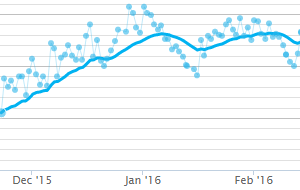Can you follow a Mediterranean diet and eat keto at the same time?
Yes! You can follow the principles of a Mediterranean diet and, as long as you keep the carbs low, it’ll be keto. Let’s take a closer look at how to do a Mediterranean keto diet.
What is the Mediterranean Diet?

According to the renowned Mayo Clinic, “There’s no single definition for the diet.” They’re right. After all, many countries border the Mediterranean Sea, and their cuisines aren’t all the same. Plus, what most people think a Mediterranean diet consists of is pretty different from what people who live there actually eat on a regular basis. (See this article for a closer look at this issue.)
Still, in popular parlance, the Mediterranean diet has some core principles that most people think of when they hear that phrase, so let’s go with those.
What the Sources Say

The Cleveland Clinic says that the Mediterranean diet is “loaded with fruits, vegetables, whole grains, fish, lean meats and olive oil.” It also recommends three to six servings per day of whole grains and starchy vegetables, and three servings of fruit per day.
There’s caution to avoid or limit red meat, full-fat dairy and egg yolks, as well as refined flour products and commercial baked goods. The majority of fat should come from plant sources (especially olive oil and nuts), or from animal foods high in omega-3 fats, like salmon, mackerel, and sardines.
Another source calls for 1-2 servings of fruit daily per meal as well as 1-2 servings per meal of whole grains in the form of bread, pasta, couscous, rice, millet, or other grains. For protein, plant sources are recommended and animal proteins are suggested to use “only for taste.” Recommendations are for two or more servings weekly of fish, two servings of red meat weekly, and two to four servings of eggs per week.
This is pretty different from how most people do keto, where some folks have two to four servings of eggs per day, include generous amounts of red meat and fatty pork, and eat no fruit, beans, or grains. But that doesn’t mean you can’t combine these two ways of eating.
Overlap Between Keto & Mediterranean

As you can see, to keep your carb intake low and be on a keto diet, you would need to avoid some of the cornerstones of a Mediterranean diet—namely, grains, beans, and fruit.
But if you get most of your protein from seafood or skinless poultry, stick to olive oil and nuts for the majority of your fat, and get your carbs from non-starchy vegetables, you can eat in a way that blends together the principles of keto with a Mediterranean diet.
Despite what you often see on social media, red meat, butter, and heaps of bacon aren’t required on keto. The only thing required for keto is a very low carb intake—and you can achieve that while following the cuisine of any area of the world, not just the Mediterranean.
Despite their differences, one place where keto and the Mediterranean diet are in lockstep is in cautioning against refined flour and added sugar.
What Does the Research Say About Combining the Two?

If you’re still wondering whether you can combine keto with a Mediterranean diet, researchers have beat you to it. A Spanish ketogenic diet was shown to be effective for weight loss, lowering blood pressure and fasting glucose, and improving markers of cardiovascular health.
The diet called for a maximum of 30 grams of carbs per day, olive oil as the primary fat source, moderate red wine intake (yes, you can include alcohol on keto!), green vegetables, and salads as the main source of carbs, and fish as the main protein.
A study looking at an Italian ketogenic Mediterranean diet found that compared to a very low calorie Mediterranean diet, a very low calorie ketogenic Mediterranean diet led to much greater health improvements in overweight and obese subjects with type 2 diabetes or prediabetes. (They had much bigger decreases in fasting insulin, hemoglobin A1c, triglycerides, total body weight and body fat, and waist and hip circumferences.)
The Italian keto diet called for fish, white meat, eggs, olive oil, nuts, vegetables, and red wine.
Do You Need a Mediterranean Diet?

You don’t need anyone’s permission to follow whatever way of eating helps you feel your best. If you want to follow a Mediterranean keto diet because you enjoy those foods and you’re loving your results, then keep at it. But there’s nothing magical about the Mediterranean diet that you can’t experience on a keto diet that isn’t specifically aligned with the Mediterranean principles.
The Mediterranean diet is typically touted for its anti-inflammatory effects and benefits for cardiovascular health. But keto diets in general are excellent for improving cardiovascular health—without a need to be shaped by the tenets of the Mediterranean diet.
And if you’ve noticed improvements in your skin, less joint pain, or fewer headaches while on a keto diet, then you’ve experienced firsthand the anti-inflammatory effects, independent of any connection to a Mediterranean diet.
Summing Up

You can follow the principles of a Mediterranean diet while eating keto. You don’t need to avoid red meat entirely, but to adhere to the tenets of a Mediterranean diet, use seafood and lower-fat poultry and low-fat dairy products as your primary protein sources. Favor olive oil and nuts as your main sources of fat and include non-starchy vegetables for your limited intake of carbs.
Need recipes or inspiration for a Mediterranean keto diet? These cookbooks can help:
Looking for a low-carb meal?
Then check out Keto Chow! Keto Chow is a low-carb shake with 1/3 of your daily recommended nutrients. Not only that, but it also can be made in seconds! Choose from over 30 delicious flavors.

























